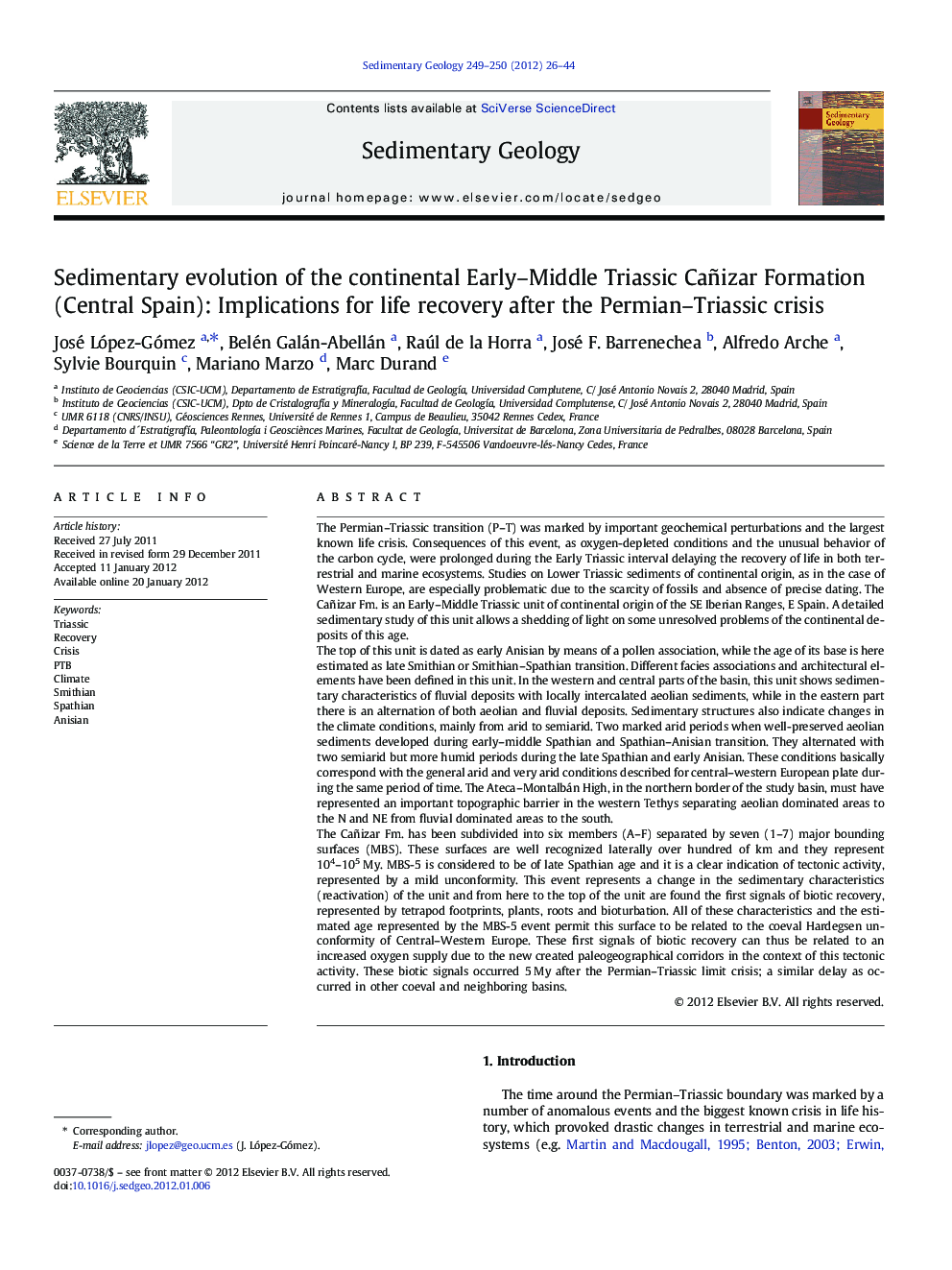| کد مقاله | کد نشریه | سال انتشار | مقاله انگلیسی | نسخه تمام متن |
|---|---|---|---|---|
| 4689840 | 1636096 | 2012 | 19 صفحه PDF | دانلود رایگان |
عنوان انگلیسی مقاله ISI
Sedimentary evolution of the continental Early-Middle Triassic Cañizar Formation (Central Spain): Implications for life recovery after the Permian-Triassic crisis
دانلود مقاله + سفارش ترجمه
دانلود مقاله ISI انگلیسی
رایگان برای ایرانیان
کلمات کلیدی
موضوعات مرتبط
مهندسی و علوم پایه
علوم زمین و سیارات
فرآیندهای سطح زمین
پیش نمایش صفحه اول مقاله

چکیده انگلیسی
The Cañizar Fm. has been subdivided into six members (A-F) separated by seven (1-7) major bounding surfaces (MBS). These surfaces are well recognized laterally over hundred of km and they represent 104-105Â My. MBS-5 is considered to be of late Spathian age and it is a clear indication of tectonic activity, represented by a mild unconformity. This event represents a change in the sedimentary characteristics (reactivation) of the unit and from here to the top of the unit are found the first signals of biotic recovery, represented by tetrapod footprints, plants, roots and bioturbation. All of these characteristics and the estimated age represented by the MBS-5 event permit this surface to be related to the coeval Hardegsen unconformity of Central-Western Europe. These first signals of biotic recovery can thus be related to an increased oxygen supply due to the new created paleogeographical corridors in the context of this tectonic activity. These biotic signals occurred 5Â My after the Permian-Triassic limit crisis; a similar delay as occurred in other coeval and neighboring basins.
ناشر
Database: Elsevier - ScienceDirect (ساینس دایرکت)
Journal: Sedimentary Geology - Volumes 249â250, 1 April 2012, Pages 26-44
Journal: Sedimentary Geology - Volumes 249â250, 1 April 2012, Pages 26-44
نویسندگان
José López-Gómez, Belén Galán-Abellán, Raúl de la Horra, José F. Barrenechea, Alfredo Arche, Sylvie Bourquin, Mariano Marzo, Marc Durand,